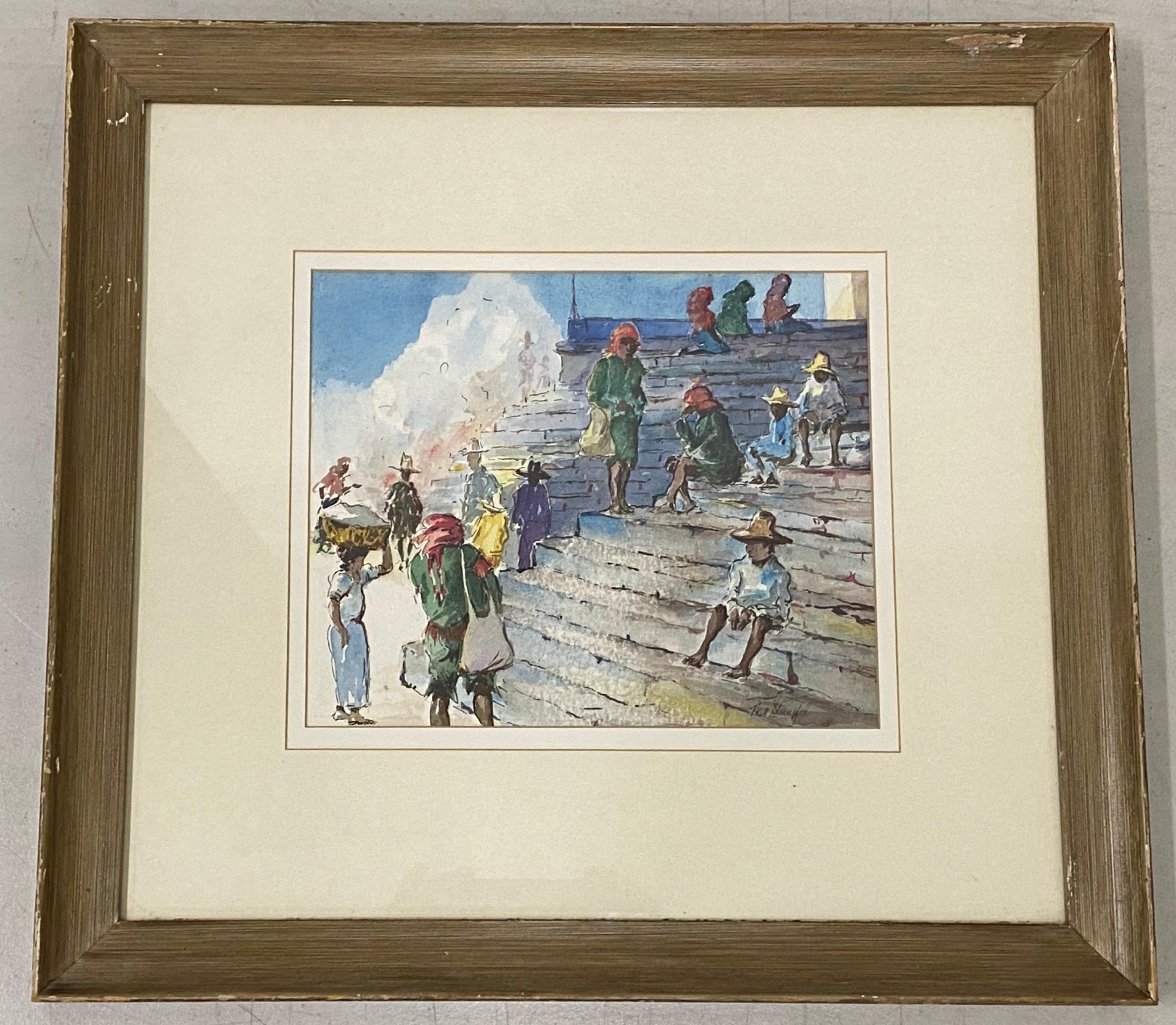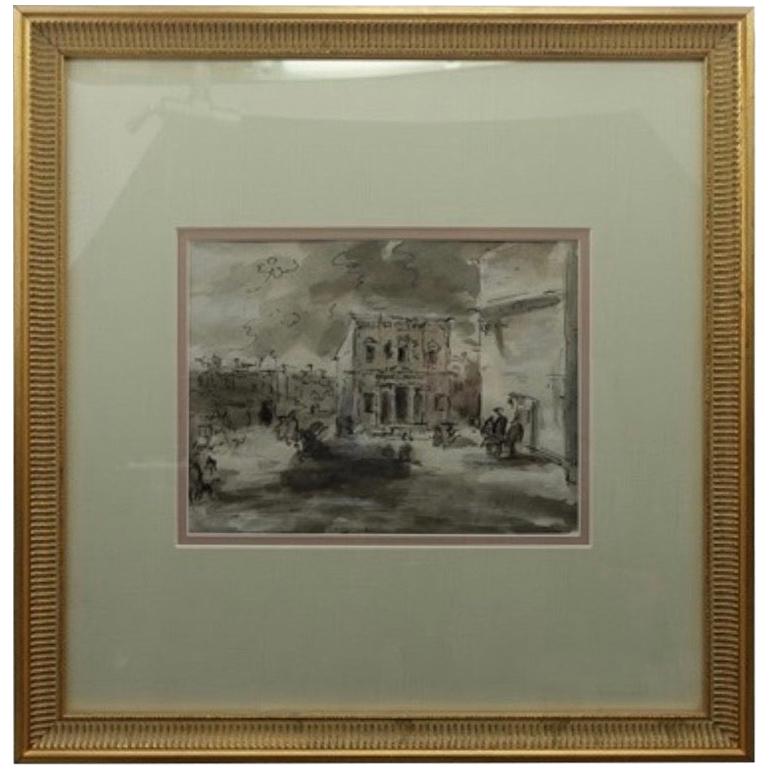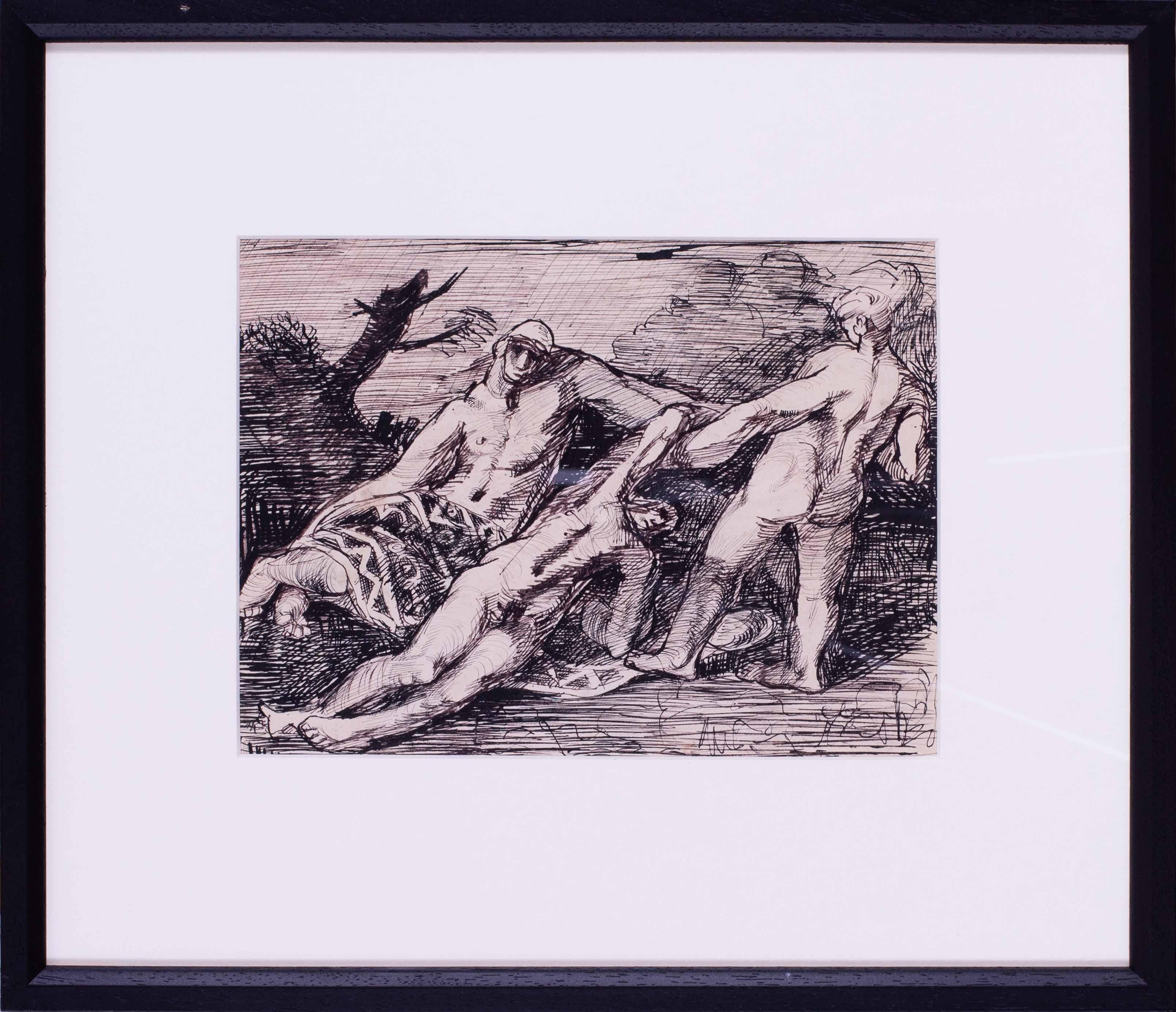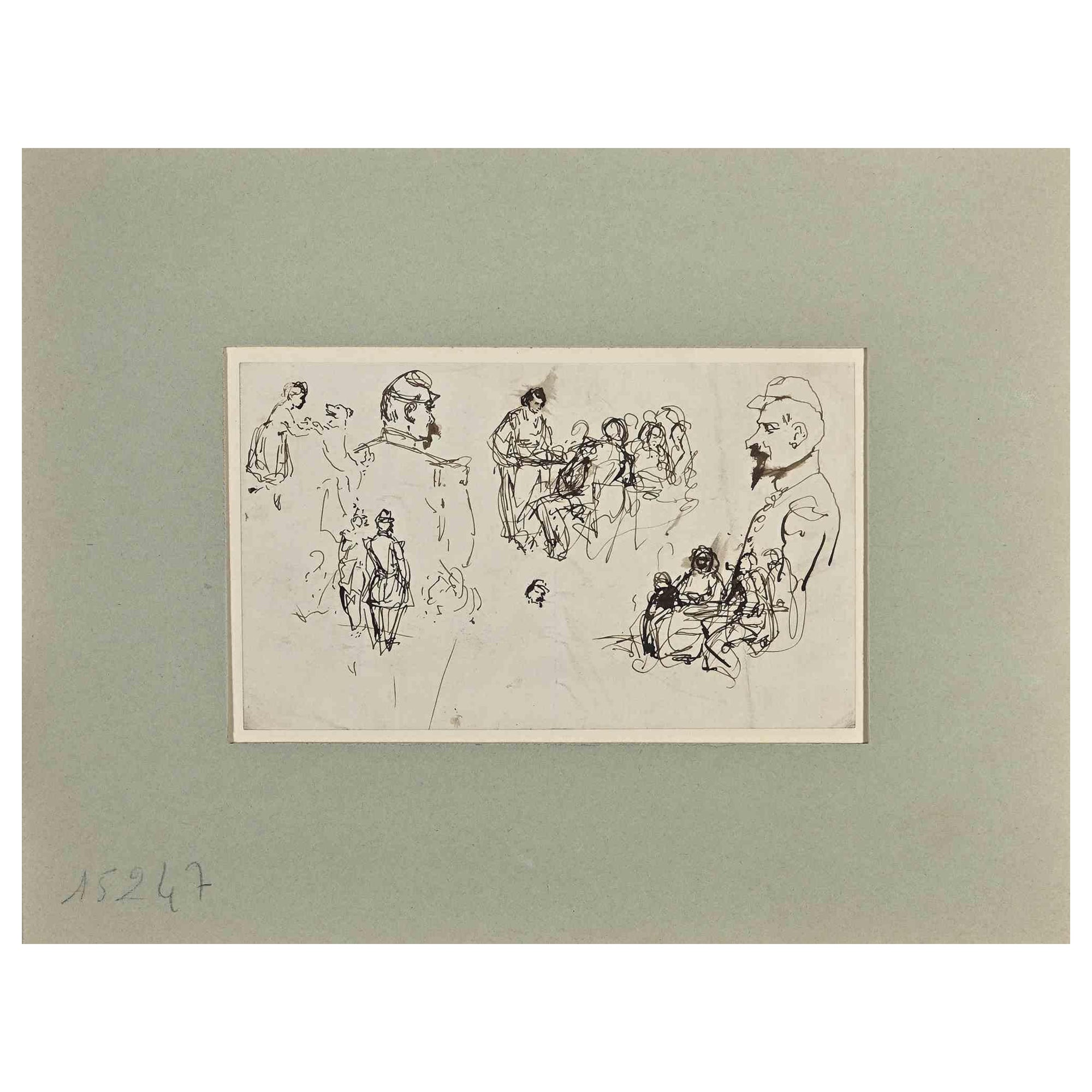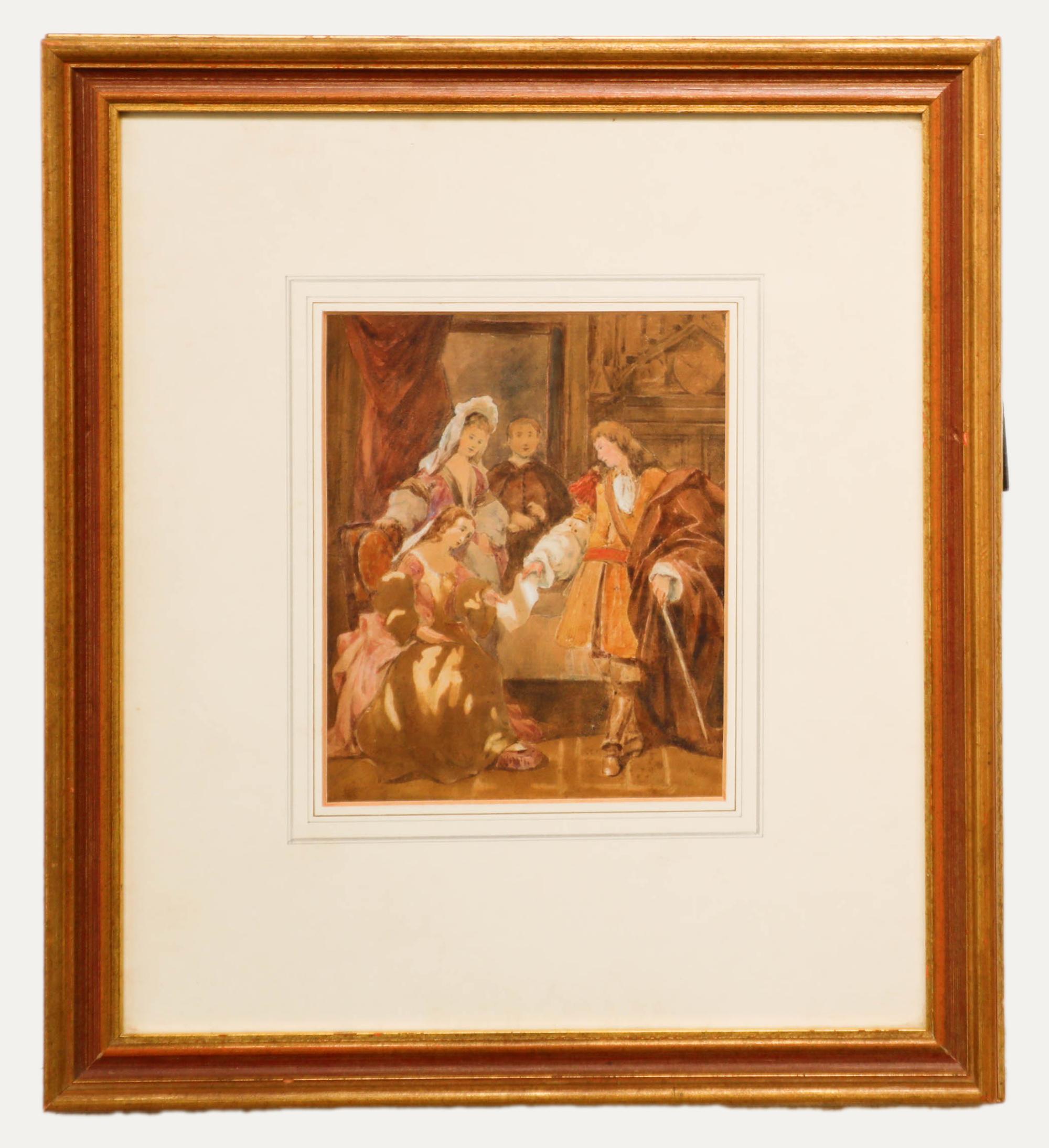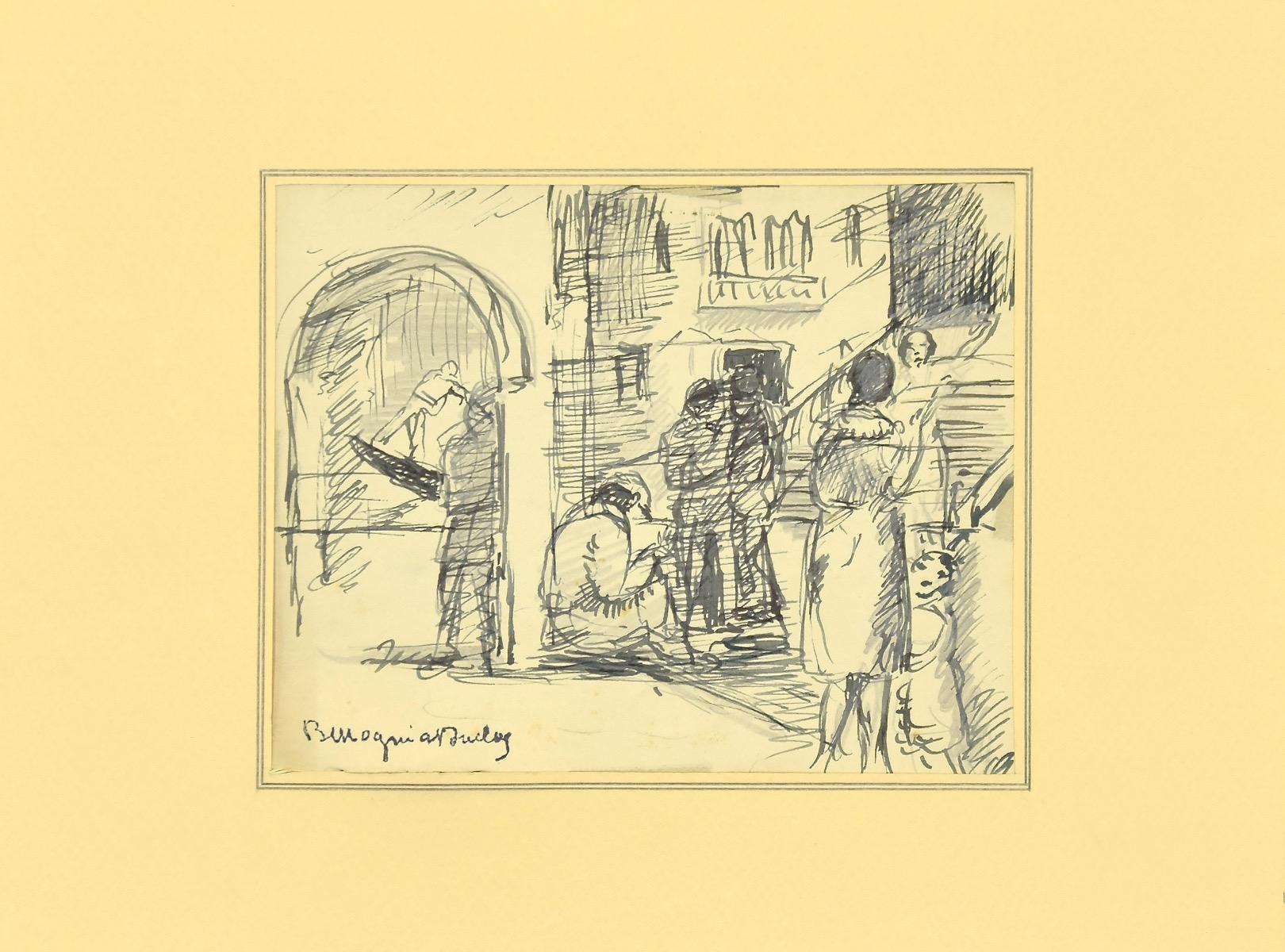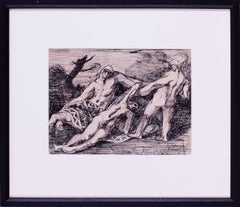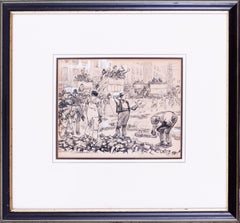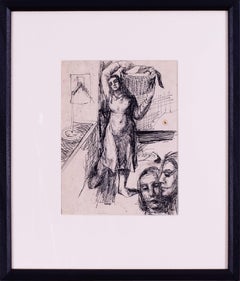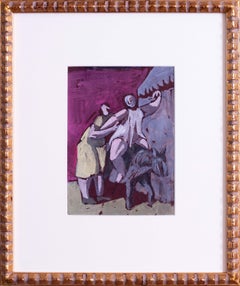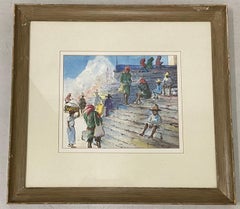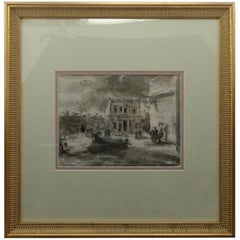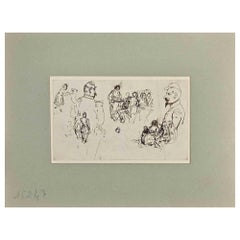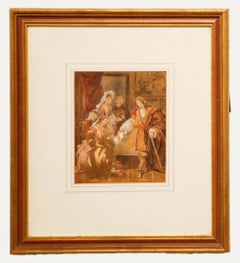Items Similar to English School, circa 1959, 'The Hampton Court paper chase'
Want more images or videos?
Request additional images or videos from the seller
1 of 8
UnknownEnglish School, circa 1959, 'The Hampton Court paper chase'
$348.87
£260
€300.92
CA$490.29
A$533.12
CHF 280.90
MX$6,475.81
NOK 3,531.48
SEK 3,310.48
DKK 2,258.14
About the Item
English School, Circa 1859
The Hampton Court Paper Chase
Pen and ink
Dated ‘nov. 2.6.4/59’ (lower right)
5.1/4 x 7 in. (13.3 x 17.8 cm.)
- Dimensions:Height: 6.38 in (16.21 cm)Width: 10.13 in (25.74 cm)Depth: 1 in (2.54 cm)
- Medium:
- Movement & Style:
- Period:
- Condition:In good condition.
- Gallery Location:Petworth, GB
- Reference Number:1stDibs: LU540310196972
About the Seller
4.9
Platinum Seller
Premium sellers with a 4.7+ rating and 24-hour response times
Established in 2010
1stDibs seller since 2017
275 sales on 1stDibs
Typical response time: 2 hours
- ShippingRetrieving quote...Shipping from: Petworth, United Kingdom
- Return Policy
Authenticity Guarantee
In the unlikely event there’s an issue with an item’s authenticity, contact us within 1 year for a full refund. DetailsMoney-Back Guarantee
If your item is not as described, is damaged in transit, or does not arrive, contact us within 7 days for a full refund. Details24-Hour Cancellation
You have a 24-hour grace period in which to reconsider your purchase, with no questions asked.Vetted Professional Sellers
Our world-class sellers must adhere to strict standards for service and quality, maintaining the integrity of our listings.Price-Match Guarantee
If you find that a seller listed the same item for a lower price elsewhere, we’ll match it.Trusted Global Delivery
Our best-in-class carrier network provides specialized shipping options worldwide, including custom delivery.More From This Seller
View AllBritish expressive, mid century watercolour 'A classical allegory' Basil Town
Located in Petworth, West Sussex
Norman Basil Town (British, 1915 – 1987)
A classical allegory
Pen and ink
6.3/4 x 9.1/4 in. (17.2 x 23.3 cm.)
Norman Basil Town (1905–1984) was a British artist known for his evocat...
Category
20th Century Expressionist Figurative Drawings and Watercolors
Materials
Paper, Ink, Pen
Ernest Howard Shepard, illustration of Punch magazine, signed, inkpen
Located in Petworth, West Sussex
Ernest Howard Shepard (British, 1879–1976)
Laying Breaks on a London Street, an Illustration for Punch Magazine
Inkpen and body colour
Signed ‘Ernest H. Shepard’ (lower left)
8 1/8 x...
Category
20th Century Academic Figurative Drawings and Watercolors
Materials
Paper, Ink
British expressive, mid century pen and ink 'Washer Women' by Basil Town
Located in Petworth, West Sussex
Norman Basil Town (British, 1915 – 1987)
Washer woman
Pen and ink
8 x 6 in. (20 x 15 cm.)
Norman Basil Town (1905–1984) was a British artist known for his evocative religious and al...
Category
20th Century Expressionist Figurative Drawings and Watercolors
Materials
Paper, Ink
British expressive, mid century watercolour 'The flight to Egypt' by Basil Town
Located in Petworth, West Sussex
Norman Basil Town (British, 1915 – 1987)
The flight to Egypt
Gouache on paper
7.1/4 x 5.1/8 in. (18.4 x 13 cm.)
Norman Basil Town (1905–1984) was a British artist known for his evoc...
Category
20th Century Expressionist Figurative Drawings and Watercolors
Materials
Paper, Gouache
British expressive, mid century pen and ink 'Preparing the nets' by Basil Town
Located in Petworth, West Sussex
Norman Basil Town (British, 1915 – 1987)
Preparing the nets
Pen and ink
7.7/8 x 5.1/4in. (19.1/2 x 13 in.)
Norman Basil Town (1905–1984) was a British artist known for his evocative...
Category
20th Century Expressionist Figurative Drawings and Watercolors
Materials
Paper, Ink
Mid Century Modern British 'The Flicks' by British German illustrator Kapp
Located in Petworth, West Sussex
Edmond Xavier Kapp (British, 1890 – 1978)
The Flicks
Ink on paper
Signed and inscribed ‘Kapp The Flicks’ (Lower left)
8.3/8 x 12.7/8 in. (21.2 x 30.1 cm.)
Provenance: From the estate...
Category
Mid-20th Century Modern Figurative Drawings and Watercolors
Materials
Paper, Ink
You May Also Like
Vintage Latin American School Original Watercolor C.1960
Located in San Francisco, CA
Vintage Latin American School Original Watercolor C.1960
A fine watercolor signed in the lower right corner (illegible)
Watercolor dimensions 1...
Category
Mid-20th Century Figurative Drawings and Watercolors
Materials
Watercolor
Continental School Pen and Ink Wash
Located in Sheffield, MA
Original pen and ink wash drawing in gold frame of a scene in European plaza with people/
Drawing size: 6.75 x 9.
Search terms: painting, etching, art,
Category
20th Century European Drawings
Materials
Paper
Figures - Drawing on Paper by H. Somm - Late 19th Century
By Henry Somm
Located in Roma, IT
Figures is an Original China Ink Drawing realized by Henry Somm (1844-1907).
Good condition on a cream colored paper, included a grey cardboard passpartout (24.5x31 cm).
Signature ...
Category
Late 19th Century Modern Figurative Drawings and Watercolors
Materials
Ink
$359 Sale Price
20% Off
18th Century Watercolour - Court Scene
Located in Corsham, GB
Signed and dated indistinctly under the mount. Presented in a gilt frame and wash-line mount. On paper.
Category
Early 18th Century Figurative Drawings and Watercolors
Materials
Watercolor
$290 Sale Price
20% Off
Figures - Pen on Paper by Bertrand Mogniat-Duclos - 1950s
Located in Roma, IT
Figures is an original black and white drawing in pen on ivory-colored paper, realized by Bertrand Mogniat-Duclos.
In very good conditions.
This artwork is a very beautiful drawing...
Category
1950s Modern Figurative Drawings and Watercolors
Materials
Pen
Children Games - Drawing - Late 20th Century
Located in Roma, IT
Children games is an original artwor realized by French artist in the late 20th century.
Mixed colored china and watercolor.
Hand signed on the lower amrgin. Unreadable signature.
...
Category
Late 20th Century Modern Figurative Drawings and Watercolors
Materials
Ink, Watercolor
More Ways To Browse
19th Century Pen And Ink Drawings
Hamptons Painting
Hampton Court
The Hamptons Paintings
Pen And Ink Drawings Female
Contemporary Chinese Ink Paintings
Charcoal Drawings Of A Dancer
Lgbtq Art
Alexander Warren Montel Lanvin
Vintage 1950S Nudes
Original Vintage Illustration Art
Antique Pen And Ink Drawings
Couples Drawings
Male Figure Painting
Antique Italian Watercolor
Oil Pastels By Reginald Gee
Original Art Sketch
Costume Drawings
